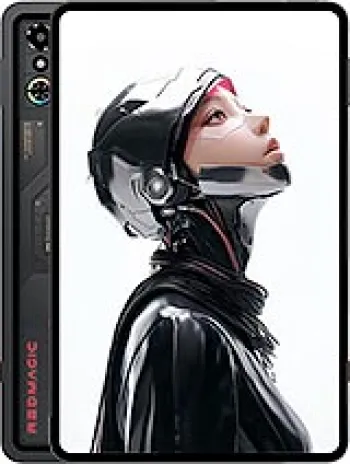
Introduction to ZTE Warp
The ZTE Warp was a smartphone that marked its presence in the market during the early 2010s. Known for being a budget-friendly device, it was released in October 2011 and targeted users who sought essential smartphone features without the high price tag. Despite its discontinuation, the phone's combination of hardware and software placed it as a competitive choice for its time.
Design and Build
The ZTE Warp had a practical and straightforward design. With dimensions of 130 x 69 x 11 mm and weighing 140 grams, it provided a balanced feel in the hand. It featured a Mini-SIM slot and the body was predominantly made of plastic, ensuring a lightweight design. The device's form factor, though not slim by today’s standards, was common among smartphones of that era.
Display
Equipped with a 4.3-inch TFT display, the ZTE Warp offered a resolution of 480 x 800 pixels. This translated to a pixel density of approximately 217 ppi, which was acceptable for the time. The screen occupied about 58.7% of the phone's front area, offering decent space for interaction with the Android OS interface.
Performance
At the heart of the ZTE Warp was the Qualcomm MSM8655 Snapdragon S2 chipset. This included a 1.0 GHz CPU and an Adreno 205 GPU, driving the Android 2.3 (Gingerbread) operating system. The device sported 512MB of RAM, which was modest but sufficient for handling basic tasks such as calling, texting, and browsing. Multi-tasking and gaming were possible, though it pushed the device to its limits in some scenarios.
Storage
The ZTE Warp came with 4GB of internal storage, adequate for storing essential apps and a limited number of photos and songs. For users requiring more storage, the presence of a dedicated microSDHC slot allowed for expansion, a valuable feature for those looking to store more media and applications.
Camera
Photography was supported by a 5MP rear camera with autofocus and LED flash. It was capable of capturing reasonable photographs in well-lit environments, though low-light performance was less impressive. The camera could also record video, serving the basic needs of video documentation. However, the device lacked a front-facing selfie camera, a feature that was becoming increasingly popular around the time.
Battery Life
The device was powered by a removable Li-Ion 1600 mAh battery. According to specifications, it provided up to 225 hours of standby time and up to 5 hours of talk time. For users, this meant a full day’s use with moderate activity without needing to recharge frequently, provided they managed their app usage conservatively.
Connectivity and Network
On the connectivity front, the ZTE Warp supported CDMA and EV-DO technology, allowing for reliable 3G internet browsing with speeds up to 3.1 Mbps. It included standard connectivity options such as Wi-Fi 802.11 b/g, Bluetooth 3.0 with A2DP and EDR, and microUSB 2.0 for charging and data transfer. The device also featured GPS with A-GPS support, though it lacked FM radio and infrared capabilities.
Additional Features
The device came with a few sensors including an accelerometer, proximity sensor, and a compass, which enhanced the overall user experience. Audio was managed through a loudspeaker and a 3.5mm jack, providing standard sound quality for calls and media playback. The black color option offered a classic look that appealed to a wide range of consumers.
Conclusion
While the ZTE Warp may seem basic by modern standards, it was an accessible gateway to smartphone technology during its time. Its build, coupled with reasonable performance capabilities, made it a viable option for budget-conscious consumers. Though it is now discontinued, its impact remains as a stepping stone in ZTE’s journey in the smartphone industry.
Main Features of ZTE Warp
- Network Technology: CDMA / EVDO with EV-DO Rev.A 3.1 Mbps speed
- Large Display: 4.3 inches TFT with a resolution of 480 x 800 pixels
- Operating System: Android 2.3 (Gingerbread)
- Processor: Qualcomm MSM8655 Snapdragon S2 with 1.0 GHz CPU and Adreno 205 GPU
- Memory: 4GB internal storage with 512MB RAM and expandable via microSDHC
- Main Camera: 5 MP with autofocus and LED flash
- Connectivity: Wi-Fi 802.11 b/g with hotspot capability, Bluetooth 3.0, GPS, A-GPS
- Sensors: Accelerometer, proximity, compass
- Removable Battery: Li-Ion 1600 mAh for up to 5 hours talk time
- Audio Options: Loudspeaker and 3.5mm jack
Drawbacks of ZTE Warp
- Discontinued status makes it difficult to find new devices or receive support.
- Limited network technology (CDMA/EVDO) which may not be supported in all regions.
- Old Android version (2.3 Gingerbread) which lacks support for newer apps and security features.
- Low display resolution (480 x 800 pixels) resulting in a less sharp display.
- Low RAM (512MB) which can affect multitasking and overall performance.
- No front-facing camera for selfies or video calls.
- No built-in radio feature.
- Limited battery capacity (1600 mAh), potentially leading to shorter usage time.
- Heavy weight (140 g) for its size compared to modern standards.

View Also
More Phones
All Rights Reserved +14267 Phones © Mobilawy 2025

























